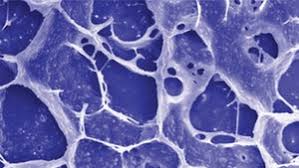
Breaking News
 Crypto Crackdown: Bitcoin Entrepreneur Entrapped by Feds
Crypto Crackdown: Bitcoin Entrepreneur Entrapped by Feds
 Chemtrail Witnesses Are Being Killed - Conspiracy or are they hiding something?
Chemtrail Witnesses Are Being Killed - Conspiracy or are they hiding something?
 BREAKING: President Trump just revealed that Vladimir Putin told him our mail-in voting...
BREAKING: President Trump just revealed that Vladimir Putin told him our mail-in voting...
Top Tech News
 Chinese Scientists Produce 'Impossible' Steel to Line Nuclear Fusion Reactors in Major Break
Chinese Scientists Produce 'Impossible' Steel to Line Nuclear Fusion Reactors in Major Break
 1,000 miles: EV range world record demolished ... by a pickup truck
1,000 miles: EV range world record demolished ... by a pickup truck
 Fermented Stevia Extract Kills Pancreatic Cancer Cells In Lab Tests
Fermented Stevia Extract Kills Pancreatic Cancer Cells In Lab Tests
 3D printing set to slash nuclear plant build times & costs
3D printing set to slash nuclear plant build times & costs
 You can design the wheels for NASA's next moon vehicle with the 'Rock and Roll Challenge
You can design the wheels for NASA's next moon vehicle with the 'Rock and Roll Challenge
 'Robot skin' beats human reflexes, transforms grip with fabric-powered touch
'Robot skin' beats human reflexes, transforms grip with fabric-powered touch
 World's first nuclear fusion plant being built in US to power Microsoft data centers
World's first nuclear fusion plant being built in US to power Microsoft data centers
 The mitochondria are more than just the "powerhouse of the cell" – they initiate immune...
The mitochondria are more than just the "powerhouse of the cell" – they initiate immune...
 Historic Aviation Engine Advance to Unlock Hypersonic Mach 10 Planes
Historic Aviation Engine Advance to Unlock Hypersonic Mach 10 Planes
 OpenAI CEO Sam Altman Pitches Eyeball-Scanning World ID to Bankers
OpenAI CEO Sam Altman Pitches Eyeball-Scanning World ID to Bankers
Unlikely drug pair combine to cut off cancer's energy supply

New research out of the University of Basel describes a drug cocktail that has the effect of putting this out of action, leading the cancer cells to wither and die instead.
Molecular scientists at the University of Basel actually discovered two years ago that a commonly used diabetes drug could be combined with a 50-year-old hypertension medication to inhibit tumor growth. Named metformin and syrosingopine, respectively, the scientists knew beforehand that the former had some anti-cancer properties, but only by mixing it with the latter did it seem to have any meaningful effect.
They have now carried out follow-up experiments in mice to better understand how this process slows cancer growth, and it centers on a molecule called NAD+ that is central to converting nutrients into energy. NAD+ is produced through two cellular pathways, one of which metformin was known to block. The other, it has now been found, can be shut down by syrosingopine's ability to cause bottlenecks in some very key areas.
"In order to keep the energy-generating machinery running, NAD+ must be continuously generated from NADH," explains Don Benjamin, first author of the study. "Interestingly, both metformin and syrosingopine prevent the regeneration of NAD+, but in two different ways."

 Our Natural Predators
Our Natural Predators

